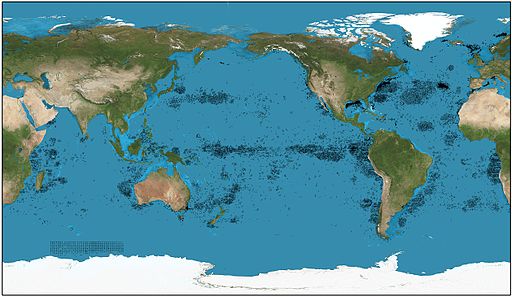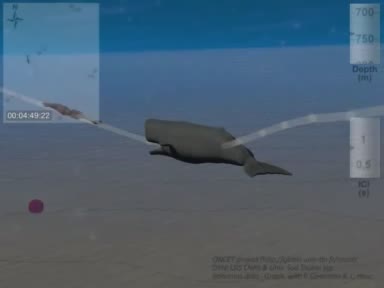
Prof. H. Glotin, University of Toulon, CNRS, Institut Universitaire de France
The acoustic search of the black boxes of the missing Malaysia airlines flight MH370 might be improved by systematic use of bioacoustic passive acoustic methods.
Various kind of anthropic pings can be confused between them, and also with pings from cetaceans.
As said by the Australian Joint Agency Coordination Center the 3rd of april 'False alerts may be experienced from biological sources such as whales or interference from shipping noise'.
Hence, it has been shown the 11th of april that some pings recorded in the search area were not from a black box:
'... four sounds were heard earlier, picked up another possible signal on Thursday, but Angus Houston, who is co-ordinating the search for Flight 370 off Australia's west coast, said an initial assessment of the signal had determined it was not related to an aircraft black box'.
To help in this identification, it could be checked also if the pings are emitted from a moving source or not, as we are used to do when we analyse whale movement by passive acoustics. Actually,
some odontocetes can emit clicks near the frequency and level of the MH370 black box pings (each second a click up to 30 kHz near 180 dB re 1uPa).
Thus, the analysis by respective expert could help to faster demonstrate if the current detected signals are emitted by black box or not.
Moreover, the current search area is a whale hotspot, with for example Physeter macrocephalus (Fig.1). Other species are present, some are not well known (e.g. the ping of a Minke whale species was unknown until last year [see Kindermann et al. paper] !).
Figure 1: The Physeter macrocephalus repartition (black dots), showing clearly this hot spot in west Australia [from Kurzon 2013 wikipedia].
Our independant research group at university of Toulon is expert in bioacoustics and whale survey by passive acoustics.
We are often requested for whale survey into the international whale sanctuary Pelagos, or National Park, Unesco reserve.... We organize int'l conferences on automatic identification and classification of complexe acoustics submarine natural scenes (ICML4B 2013 ans NIP4B 2013 in USA, ICMLulb 2014...).
The 9th of april we have been contacted by Olivier Rimmel, head of a french compagny in marine security, working since the crash with independant scientists on every possible information sources. He wished also the recordings to be checked by expert in whale survey, then we wrote this blog.
Therefore we propose to expertise some samples: we can run and quickly answer (in real time with our state of the art algorithms: we have recently published an USA patent on whale survey by passive acoustics). Some of our results computed on real data from Bahamas AUTEC are given in Demo 1 below. We think we are able to discriminate between different pings. Based on our strong expertise in submarine transient analyses, we may set if recordings are emitted from fixed sources or not, if they are anthropic (sonar, uboat, black box ?) or not (bioacoustic).

Some other references on our activities are available here.
You are very welcome to send us any request, it will be processed promptly with academic ethics and discretion.
Contact:
Pr GLOTIN Herve, CNRS LSIS, University of Toulon
email : glotin@univ-tln.fr
Phone (Work) : +33 (0)4 94 14 28 24 / Cell +33 (0)6 06 42 73 01 at any time (even night).
Other selected references:
-Our current submarine survey projects and conferences are listed on there.
-'Whale cocktail party: real-time multiple tracking and signal analyses', int'l journal Canadian Acoustics, 2008,
H. Glotin, F. Caudal, P. Giraudet.
-'Short based multiple whale tracking by passive acoustics', int'l journal of Applied Acoustics, 2010
, F. Caudal, P. Giraudet, H. Glotin.
-'A study on whale pings analysis', int'l journal Eurasip, 2010,
F. Caudal, H. Glotin.
-Other methods on other cetaceans: 'Classification of mysticete sounds using machine learning techniques', int'l Journal of the Acoustical Society of America, 2013,
X. Halkias, S. Paris, H. Glotin.. Similar content of this paper can be found here.
-You may listen to these pings of a Physeter macrocephalus that we recorded near Toulon in 2012, FS = 48kHz (we have also recordings at 250 kHz FS).
--